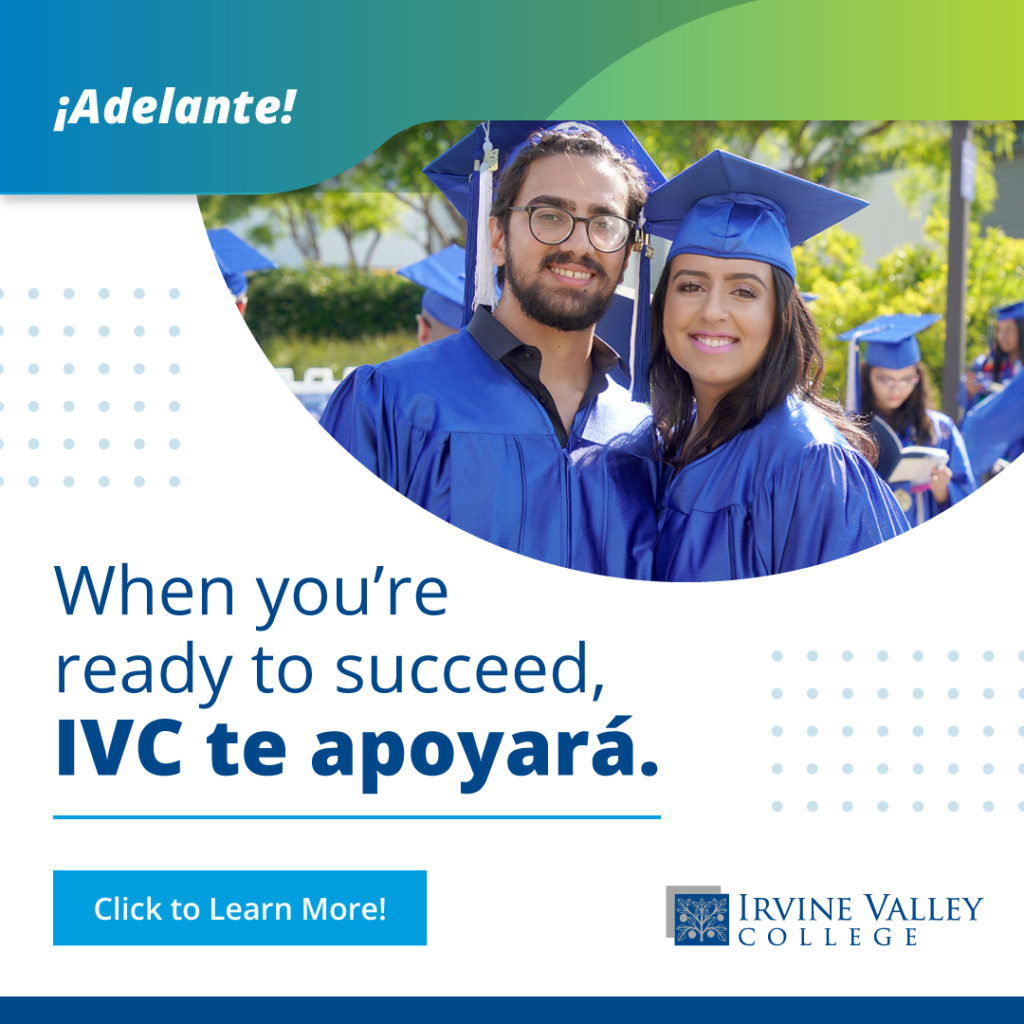At the beginning of summer, Irvine Valley College reached out to Graduate for help with a campaign targeting Hispanic and Latinx students. By all accounts, the campaign turned out really great and I wanted to share a few things we did to make sure it was successful.
To begin, I am not Latinx, nor do I speak Spanish. As someone who has written children’s books about Mexican and African American musicians, I am deeply aware of the challenges (even dangers) that go with writing outside your cultural frame of reference. So, the big question for me was how to craft a campaign that would speak to this audience in a way that was unbiased, authentic, and credible. Like all of you, I believe deeply in the power of education, so the last thing I’d ever want to do is misrepresent (or at worst insult) the audience I am trying to reach.
To give us a little context, IVC’s goal was this: considering that Orange County’s Hispanic population accounts for 34 percent of residents, but only 25 percent of IVC’s student enrollment, IVC wanted to do a better job targeting Hispanic and Latinx students (specifically, in the 18 to 26-year-old range) with the goal of eventually securing the Hispanic Serving Institution designation.
The first step was to involve stakeholders who could provide insight into Hispanic and Latinx culture and specifically those cultures in Orange County.
One critical thing I’ve learned (due in large part to the many campaigns I’ve managed that required Spanish translations) is that not all Spanish-speaking cultural groups speak the same Spanish. This might seem obvious to many of you, but it’s a kind of a baked in bias that many majority culture professionals fall victim to. While we recognize the complexity of our own linguistic heritages and the roles that regions play in that inheritance, we often minimize those differences as they exist in cultures that are “foreign” to us.
For example, while English-speakers understand that idioms and dialects change across English-speaking countries and regions (just compare the West Coast and the American South), we’re often guilty of lumping all “foreign-language speakers” into single, monolithic groups that assume they’re all the same. This may not be intentional bias but it is one of the ways that we, as majority culture professionals, simplify “the other.” According to the article “Spanish in the U.S.,” from PBS.org, “Another misconception commonly held by many native English-speaking Americans is that “Spanish in the United States” is a singular, monolithic entity. Sociolinguists and dialectologists have shown time and again that American English is a dialectally diverse language, but less often do we think of American Spanish as being equally diverse.”
So, if you’re writing to a culture or language-group that is foreign to your own, you obviously need to involve someone from that group. It’s easy to do and I guarantee you’ve got someone on campus who would be willing, and even excited, to help. If they’re in marketing, or a marketing-related department like Outreach, awesome. If not, is there anyone in student services, admissions, the career center, etc.? I bet there is. And if not, find a student.

The other reason to do this is to simply protect yourself against potential blind spots and unintentional bias. In children’s publishing, we use what are called cultural sensitivity readers to make sure our texts and images are unbiased and culturally aware. For my picture book When Angels Sing: The Story of Rock Legend Carlos Santana (Atheneum), I was lucky enough to have illustrator Jose Ramirez, who is Hispanic, to make sure the text was on point. That book went on to win an American Library Assocation Pura Belpre Honor for Illustration (presented annually to a Latinx writer or illustrator whose work best portrays, affirms, and celebrates the Latinx culture), and a Robert F. Sibert Honor, given to the five best nonfiction children’s books published in a given year, so my guess is we did okay.
For the IVC project, IVC’s Outreach manager, Frank Rivera, who is Hispanic, was one of the project leads, so I had it easy. His insights into language and the largely low-income, working-class demographic we were targeting, were invaluable.
My favorite example of the benefits involved in including cultural stakeholders is what happened when Frank shared the campaign copy with his wife, who is also Hispanic. He was looking for a second opinion, but she gave us something better—a regionally specific idiom that we then added to the campaign. Talk about adding an authentic voice that was sure to resonate with prospects!
Not only did Frank give us insight into language but he was a critical sounding board for ideas in general. Without him, I never would have had the ability (or courage) to execute the rhetorical strategy that makes this campaign special.
My idea was simple—let’s help create authenticity and connection by using language in the same way that our prospects do by mixing English and Spanish into the linguistic stew known in SoCal as Spanglish. That concept alone gave us a powerful rhetorical way to capture the essence of the campaign, which was to communicate to Hispanic and Latinx student prospects that IVC is a place where they belong. With Frank’s guidance and expertise, we were able to make this concept come to life.
(While Spanglish is common to Mexican-American households, Frank reminded me that this language would be less familiar to South and Central American Latinos because their Spanish is different. Still, since the majority of Hispanics in California and especially Orange County are Mexican-American, we felt it a relatable choice that would resonate with the majority of our target audience.)
To bolster our discussions, Frank also sent me articles that helped expand my understanding of our target audience.
One of them was the “Report and Recommendations for Improving Black and African American Student Outcomes” from the California Community Colleges Black and African American Advisory Panel. Frank’s insight was that Hispanic, first-gen students encounter a lot of the same barriers and this report would provide solid context for the needs of the Latinx student we wanted to speak to.
In our discussions, Frank also taught me that students from low-income homes are typically raised with a “family first” mentality, which makes perfect sense. When resources are tight and you’re struggling with basic needs, of course a family is going to pull together. Because of this, I knew to craft messaging that spoke to how higher education benefits not just the individual but the whole family.
Another key to this process is just being willing to accept the fact that despite being professionals and despite being great at what we do, we don’t know everything. As higher education professionals, we’re often under a lot of pressure to have all the answers. But the truth is, admitting that you have questions is the true path to knowledge. And this is especially true when tackling difficult subjects like systemic racism or writing outside of your culture.
In the end, the reason you need to involve cultural stakeholders is because if we can better understand the barriers and challenges being faced by our prospects, we can better craft our messages to speak to those concerns, better create messages that inspire them, and better succeed at driving them towards the life-changing opportunity that is education. The best part? Understanding the challenges faced by demographics that are outside of our own not only makes us better marketers, but also makes us better human beings.
Authentically Communicating Diversity on Campus Through the Written Word










